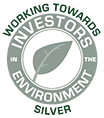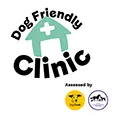The pet food industry is bigger than ever, with so many options available do you choose dry food or wet food? Manufactured or home cooked? There are so many options, let's discuss one choice that receives mixed emotions.... the Raw food diet.
As pet owners, we want nothing but the best for our 4-legged family members and if you ask any owner what they feed their pet, they will all tell you that their chosen diet is the 'best;' and for many owners choosing a raw meat diet, this too is the case.
Why Owners Choose Raw
Some of the reasons owners choose to feed raw include;
- "Dogs are descended from wolves who would eat raw meat in the wild."
- "Commercial pet food companies fill their food with grains and all the rubbish left-over bits from the meat."
- "My dog is a working dog so raw is better"
- "Dogs are carnivores."
What our Vets Say
The most important factor for any diet, is that it must be balanced and provide your dog with the correct range of nutrients and energy. Here's what our vets say in response to the points made above;
"Dogs are descended from wolves who would eat raw meat in the wild."
It's commonly believed that dogs descended from wolves, however genetic evidence shows that the two are in fact separate species who are likely to share a common ancestor. There are of course many genetic, behavioural and physical similarities between the two species, which is why there are supporting and counter arguments for the belief that domestic dogs have the same nutritional needs as wolves.
"Commercial pet food companies fill their food with grains and all the rubbish left-over bits from the meat."
In order for our vets to recommend a diet they need to know that the food is suitable, which means we need to know what goes into it, so we regularly receive training and information from the food companies and learn the science that goes into making that particular food. When looking for a good commercial dog food, here are some important things to look out for;
- A protein (meat) source should be listed as the number 1 ingredient, rather than cereals/grains being the highest percentage.
- Choose a food that lists the specific protein type, if the label says 'chicken' or 'beef' it usually means fresh prepared chicken/beef.
- Avoid food that lists 'meat' rather than a particular type, meat means it could be any type of protein and it may change from one batch to another, which isn't ideal for dogs with sensitivities to certain proteins as you cannot guarantee what protein has been used.
- Avoid foods listing 'animal derivatives' as the protein source. This could mean any products and parts of the carcass, it could cover high quality meat or it could include low quality body parts with little nutritional value.
- Artificial colours should be avoided, if your pet food is multicoloured, don't be fooled into thinking the green is vegetables! Just like with humans, artificial colouring should be avoided where possible.
There is also a trend at present for 'grain free' commercial pet foods, there is lots of information circulating the internet saying grains are bad for dogs, however this isn't strictly true as there are many types of grains.
Wholegrain rice is easily digested by dogs once it's well cooked and it contains a lots of natural nutrients including three B vitamins, iron, manganese, selenium, magnesium and omega-3 oils. It's also a excellent source of fibre, which is important for intestinal health. If this was listed as the grain choice it would be preferable over a food that uses wheat, which is regularly linked with dietary intolerance in dogs.
We'd recommend avoiding foods which list 'cereals' or 'grains' rather than the particular type. This can refer to any product of any cereal including wheat, rice, oats, barley, maize etc. so you cannot guarantee which type of grain has been used.
"My dog is a working dog so raw is better"
Feeding a raw diet is quite common in working dogs, because their owners believe the high protein and fat content is beneficial for active animals. However, a diet based purely on meat is not nutritionally balanced and is missing many vitamins and minerals dogs need to stay healthy. For example, it doesn't contain enough calcium which is needed for strong bones; a working dog depends on strong bones so a diet low in calcium may increase the risk of fractures and injury.
"Dogs are carnivores."
There are hundreds of articles debating whether dogs are carnivores or omnivores, so here's some information to help you decide.
- True carnivores (e.g. cats) have a higher nutritional requirement for nutrients and vitamins that are found in animal proteins and fats (taurine an amino acid, arachidonic acid a fatty acid, niacin, pyridoxine and vitamin A.) Whilst omnivores (e.g. dogs and humans) don't require the same high levels.
- Dogs are able to create their own vitamin A using beta carotene from plants, whilst their carnivore counterparts like the cat have a greatly reduced ability to convert Beta Carotene to Vitamin A.
As well as their nutritional needs, there are also physical factors separating omnivores and carnivores, including:
- Dogs have a small intestine that occupies about 23% of the total gastrointestinal volume, which is consistent with other omnivores. Comparatively the small intestine of a cat, a true carnivore, occupies only 15%.
- Dogs have sharp canines at the front of the mouth (just like cats) which are used to grip and tear into foods like meat; but they also have flat teeth in the back of their mouths called molars (just like humans), which are used to grind food like bones and plants.
A well known, leading pet food company describes dogs as "opportunivore," which may be a great way to best describe the naturally opportunistic feeders who will eat whatever is available — plants as well as animals.
Some concerns with the Raw diet
There are testimonials and claims from breeders, behaviourists and raw feeding owners, that feeding a raw meat diet can give dogs longer, healthier lives with reduced risk of diseases, such as arthritis, pancreatitis and cancer, however this is yet to be proven with scientific evidence. Comparatively, evidence showing the risks associated with raw food diets is beginning to stack up.
Bacteria
The presence of large quantities of raw meat in the home could pose a risk to humans, as with all un-cooked meats the risk of bacteria like salmonella is a concern and it's possible for dogs who have eaten salmonella contaminated meat, to shed salmonella in their faeces. Many Raw food advocates claim 'dogs are scavengers and in the wild would eat rotting animals' or 'dogs saliva is antibacterial' or 'dogs stomachs are designed to kill bacteria.'
Raw meat may also carry campylobacter, which can cause clinical disease in both humans and dogs. In 2015 research showed that 73% of chicken was contaminated with campylobacter in a wide range of retailers.
Bones
Injuries caused from dogs eating and chewing on bones can be horrific, vets sadly see too many cases of dogs with bone fragments stuck in their throats or sharp fractures from bones tearing the stomach and colon. Owners who feed their dogs bones, will often say that un-cooked bones pose no threat, as they don't become brittle and shatter in the same way cooked bones do. However, no evidence is available to confirm this is true.
Bones are claimed to be beneficial for dental health, which does make sense as the chewing reduces tartar build up. However, with the wide range of dental chews and toys available on the market now it seems foolish to risk foreign bodies and tooth fractures by using bones.
So should you avoid Raw Feeding?
Whilst many owners and dogs rave about the benefits of feeding dogs a raw meat diet, there are many considerations to think about and what suits one dog, may not suit another. As Veterinary professionals, we do not openly recommend feeding raw due to the associated risks discussed in this article.
For most owners, the convenience of commercial pet food fits in with our busy lifestyles, whilst ensuring your pet gets a complete, balanced diet. We recommend choosing the highest quality you can afford as cheap often means lower quality ingredients and may actually work out more expensive, as you will likely need to feed a larger quantity for your pet to get the nutrients and energy they need.
Most companies produce several ranges of pet food, all with their name on to ensure they capture as many potential buyers as possible. Their premium range will use high quality ingredients and be more expensive as a result, this will appeal to 'high-end' buyers; but they will also produce a 'budget' range using lower quality ingredients with a cheaper price tag. Don't assume a 'cheap' bag of food with the same brand name as an 'expensive' bag is the same quality.
Use the tips we discussed earlier when looking at ingredient lists and do your research rather than buying into marketing gimmicks and fancy packaging (big companies will spend big bucks to entice you to choose their food.)
If in doubt, speak to one of our fully qualified Veterinary Nurses who will be happy to make recommendations and check the diet you are considering in a free appointment. Simply call us on 01905 355938








